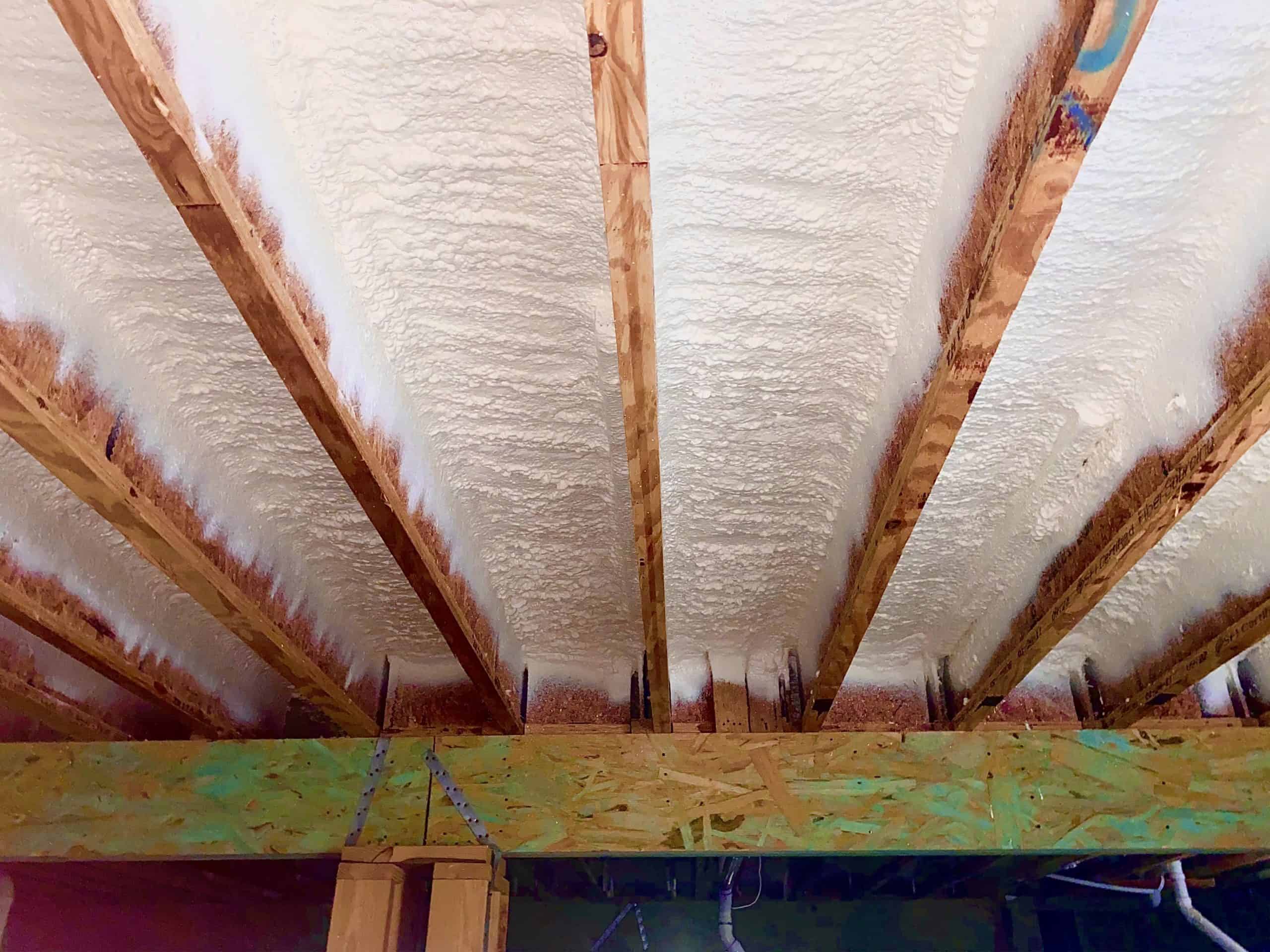Insulating your crawl space with spray foam can save you hundreds of dollars in energy bills. However, if the spray foam insulation installation is not done professionally, you may incur the cost of completely redoing the job. Thus, the cost of insulating your crawl space will depend on how much work you plan to do yourself, as well as if you’ll hire a professional to install your insulation. It’s prudent to contract insulation contractors because their experience allows them to apply the spray foam properly and ensure it stays in place for decades.
Costs also vary according to geographical location, local labor rates, and material costs, considering spray foam is one of the most expensive crawl space insulation materials. That said, you should be prepared to fork out an average of $3,500 for a 1,000 square foot crawl space. In this article, we will give you insights into how much you should expect to pay for your insulation job and the factors that go into pricing.
The Crawlspace Size
The size of your crawlspace is probably the largest determining factor when it comes to the overall cost of installing spray foam insulation. The larger the crawlspace, the more material and time you will need to complete the installation. In other words, a smaller crawlspace will normally cost less than a larger one.
The cost will also depend on whether you’re only applying insulation underneath the floor or insulating the walls and the floor as well. The crawlspace’s wall height can also factor into the cost – the higher the walls, the more insulation you’ll use.
Crawl Space Condition
If you have an older, uninsulated crawl space, you may be wasting energy, impacting your indoor air quality, and contributing to excessive moisture problems.
Signs of damp, rotting wood, mold, or sagging floors above the crawl space, indicate that you need to do some prep work before insulating. You’ll need to inspect your crawl space, and if you identify mold, contracting a professional mold remediation company to remove the mold before insulating is recommended. This mold remediation step will add to the overall cost of your insulation job, but it’s a necessary step if you want to prevent future problems.
In addition, your contractor may recommend other changes to the environment of your crawl space before insulating. For example, if you have an older home with a dirt floor, you may need to install a vapor barrier before insulating. This step will increase the cost of the insulation project but will also protect the crawl space from moisture, which can cause mold. A vapor barrier might cost around $640 for a 1,500-square-foot home.
Crawl Spaces: Whether They Are Vented or Unvented
As a general rule of thumb, vented crawl spaces tend to cost more to insulate than closed crawl spaces. Since the presence of vents will allow moisture and humidity to build up in your crawl space, insulated installations need to include additional sealing. Unvented crawl spaces don’t require this step, which means installation is quicker and less expensive.
Type of Spray Foam Insulation
You have two choices when it comes to the type of foam insulation that you use. The first option is open-cell spray foam insulation, which has an R-Value between 3.5 and 4 per inch. This fills most gaps but doesn’t have a vapor barrier, so it’s not recommended for homes in colder climates where moisture might enter the crawl space.
Closed-cell spray foam insulation provides leak protection and extra durability because of its high R-value (6.5 per inch). Closed-cell foams are more expensive than open-cell foams, but they will generally provide better results when installed properly by a professional contractor; this makes them worth the higher cost.
The Thickness of Foam Insulation
The cost of installing foam insulation in your crawl space will depend largely on its thickness. The thickness of foam insulation required in your crawl space depends on your local climate. Homes located in mild climate areas that do not experience significant temperature changes might only need a thin layer of foam insulation. In contrast, homes located in climates that experience greater fluctuations in temperature will require thicker insulation. While this will increase the cost, creating a more completely sealed space will result in lower energy bills.
Taking Out the Old Insulation
If the insulation has been in place for many years and has absorbed moisture, it should also be professionally removed. Old insulation in crawl spaces isn’t as energy-efficient and is a source of wasted energy, higher monthly utility bills, and an uncomfortable living space.
The main reason to have a professional remove the old cellulose insulation is that they have the tools and equipment needed to safely remove and dispose of any hazardous material that may have been present in the insulation. Unfortunately, this will also add to the cost of insulating your crawl space.
Crawl space insulation is a cost-effective way to reduce energy loss and make your home more comfortable. Spray foam insulation will provide your home with better thermal resistance and improved air quality. The cost of installing foam insulation in your crawl space will depend in a large part on its thickness. The thickness of foam insulation required in your crawl space will depend on the climate where your home is located. Homes located in climates that experience greater fluctuations between cold and hot seasons may require thicker insulation, thus increasing the overall cost. Other considerations include whether or not the crawl space is vented (closed) or unvented; if you have an older home with dirt flooring then installing a vapor barrier before insulating may also increase costs.
For more information on installing foam board or spray foam insulation in your crawl space, visit our website at https://fdinsulation.com/attic-insulation/spray-foam/ today
First Defense Insulation,
11715 Anderson Road Willis Texas 77318,
713-808-9853
